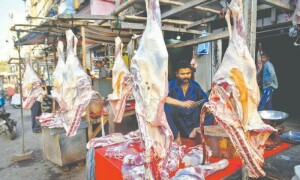
SINGAPORE: Flood and storm-battered northern Australia is likely to suffer more frequent weather extremes, according to a study of coral cores that reveal a centuries-old climate record for the region.
Like pages in a book, corals can help scientists go back in time by revealing years that were unusually wet or dry. The annual changes or variations in weather are recorded in growth rings that can be studied by drilling and extracting long cores.
“The corals are providing another piece of evidence that maybe suggests that we are seeing some consequences already of global warming,” Janice Lough, a senior scientist at the Australian Institute of Marine Science in Queensland State, told Reuters from Townsville on Thursday.
Lough, in a study to be published in US journal Paleoceanography, examined 17 coral cores taken from reefs off Queensland's northeast coast. The rings in the cores date from the 17th century until 1981 when they were collected, yielding a 300-year climate record.
Northern Queensland typically gets most of its rain during the summer monsoon and is at the mercy of the El Nino and La Nina weather patterns that normally bring drought or floods.
The current strong La Nina is blamed for record floods that have inundated large areas of Queensland in recent months, killing dozens of people, crippling coal mines, swamping thousands of homes and damaging crops.
Lough said her study found that the frequency of weather extremes seems to increase in recent centuries.
“It can be difficult to detect whether any changes are happening just because of that high natural variability,” she said, but added that the long-term record suggested some sort of change had occurred.
“That tropical rainfall variability will become more extreme.” The cores come from Porites coral domes that can grow up to 8 metres high and be centuries old, growing between 1 and 1.5 cms a year, she said.
In her research, Lough looked into slices of the coral under ultraviolet light to study the growth bands.
During wet years, rivers flush a lot of plant matter and a mix of compounds called humic acids into the ocean and these acids are absorbed by the coral and stored in its skeleton.
Under UV light, growth bands with more humic acid show up more brightly than bands from drier years.
Lough said the coral records were another piece of the climate jigsaw, given the lack of long-term historical weather data, particularly in the Southern Hemisphere and the tropics.
“Corals are natural history books,” she added, revealing growth rates, changes through time and the amount of freshwater run-off from land.











































Dear visitor, the comments section is undergoing an overhaul and will return soon.